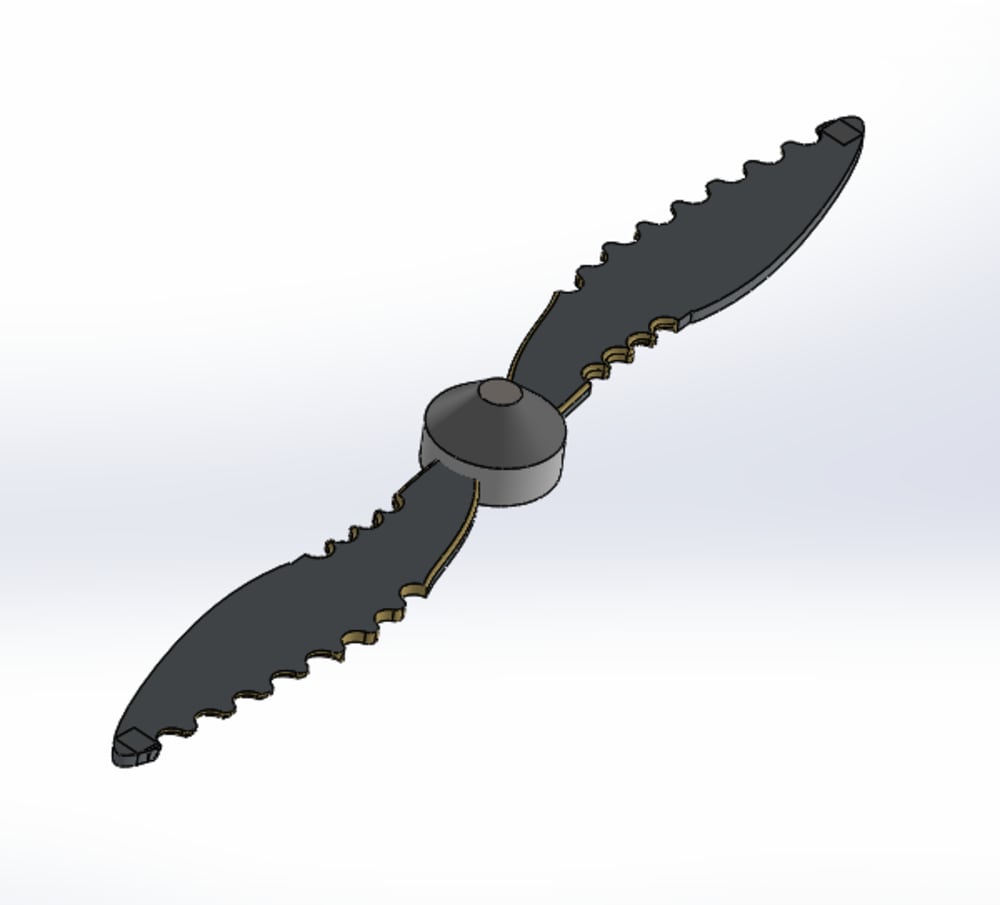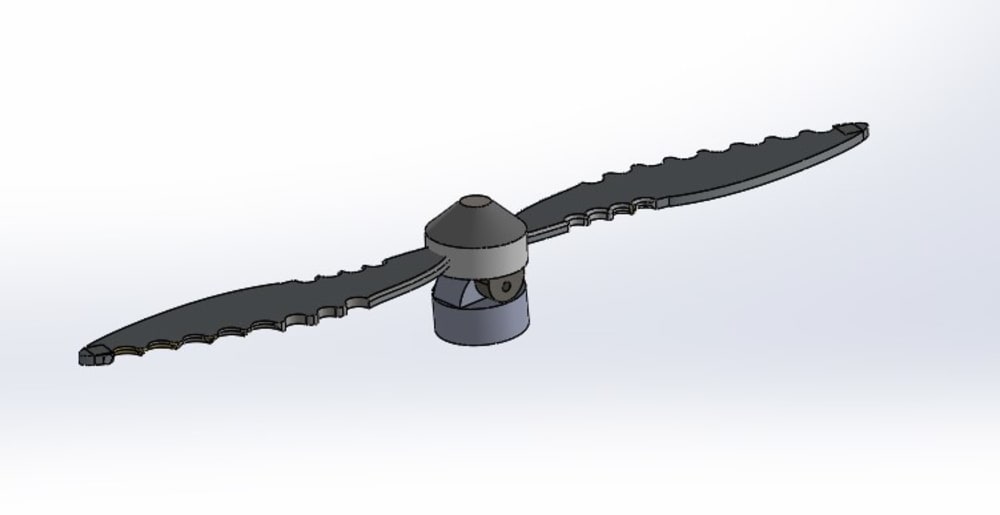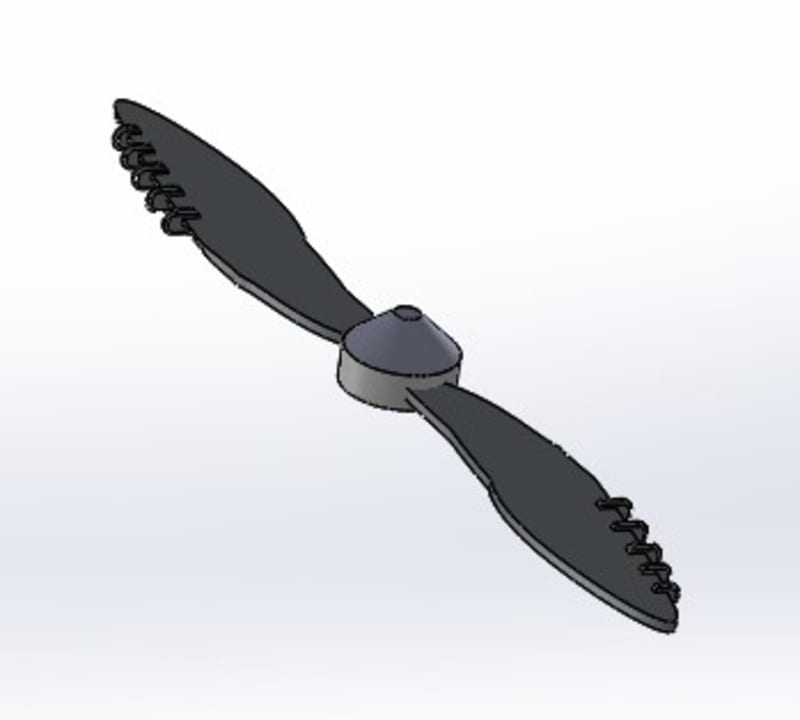Recent studies have shown that bumblebee wings create small tornadoes through the so-called - hamuli. These are hook-shaped processes on the edges of the wings.
Thus, a kind of turbulent air cushion is created under the wings. Small whirlwinds have a greater density - hence the mass of air thrown by the wings is greater. Higher air density requires less wing area.
But how can you create small whirlwinds under the propeller? Natural copies of hamuli hooks will be brittle and unusable in a circular motion.
It is easier to develop a wavy contour of a corresponding complex configuration. The drawing shows a schematic simple version of such a circuit.
In principle, such contours, called chevron, are already used on aircraft engines to reduce noise. But in the presented propeller, this chevron will work in reverse mode. Due to the undulation of the contour, the air captured by the propeller will be divided into streams of different speeds, which will twist into vortices under the blades.
The same vortices can create notches on the trailing edge of the blade. It is necessary to choose the optimal parameters of the contours on the leading and trailing edges of the blade.
Taking into account the dimensions of the wing and the weight of the bumblebee, it can be assumed that the load capacity of this propeller will be about 2 times more than a conventional propeller of the same size. Other versions of such a propeller are possible.
For example, on the leading edge of the blade, you can install small ridges that will imitate the hook-shaped hamuli mentioned above. But such a version will have more resistance and friction costs. You can also make the propeller vibrate like a bumblebee's wing. Uneven vortices will make it vibrate without additional mechanical effort from the motor.
To do this, it is enough to install the propeller on a special hinge with an additional horizontal axis. On such hinges, each blade can be placed separately, giving them the opportunity to oscillate independently of each other.
The vibrations of the blades can be corrected with permanent magnets.
https://www.facebook.com/Turbulent-Propeller-104600302158256
Like this entry?
-
About the Entrant
- Name:Jacob Bizehr
- Type of entry:individual
- Software used for this entry:Solid Work
- Patent status:pending








